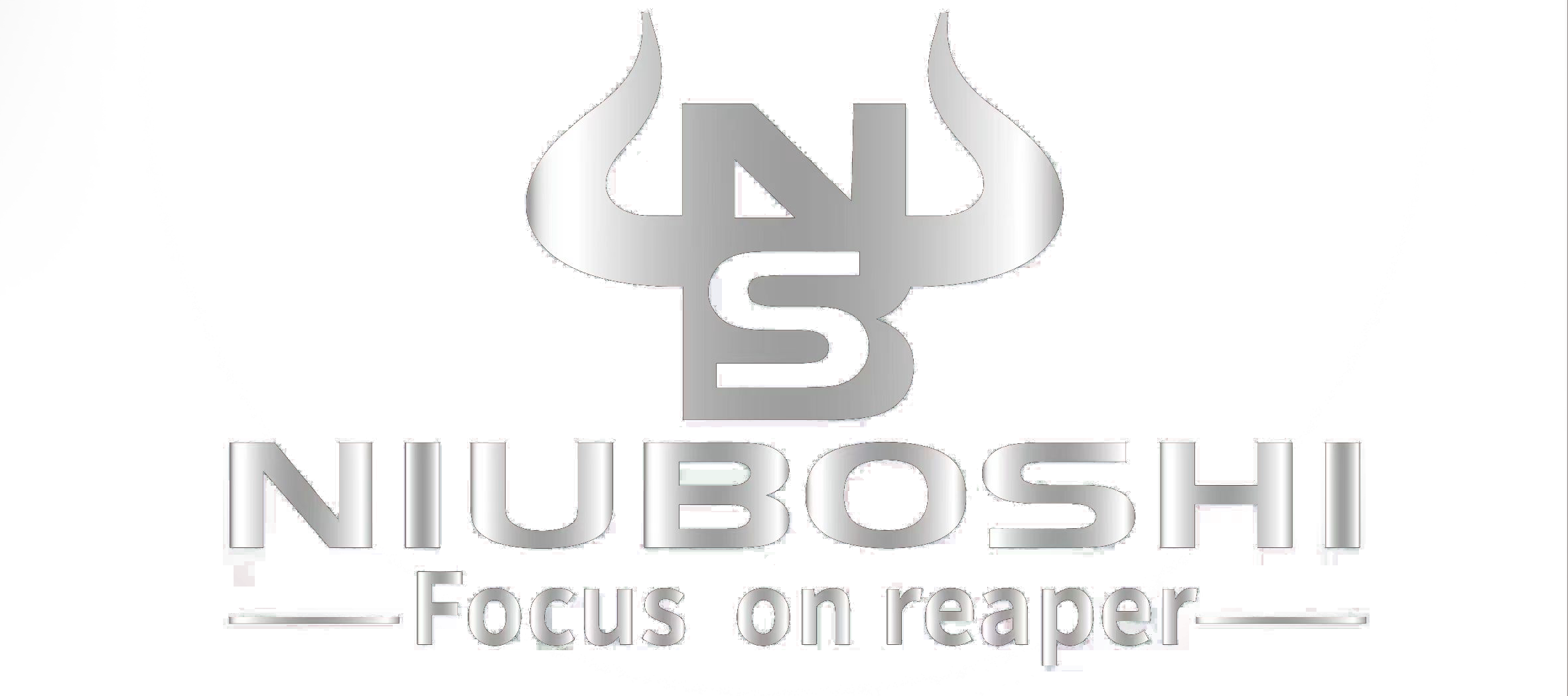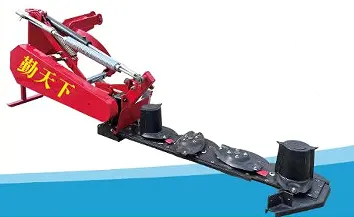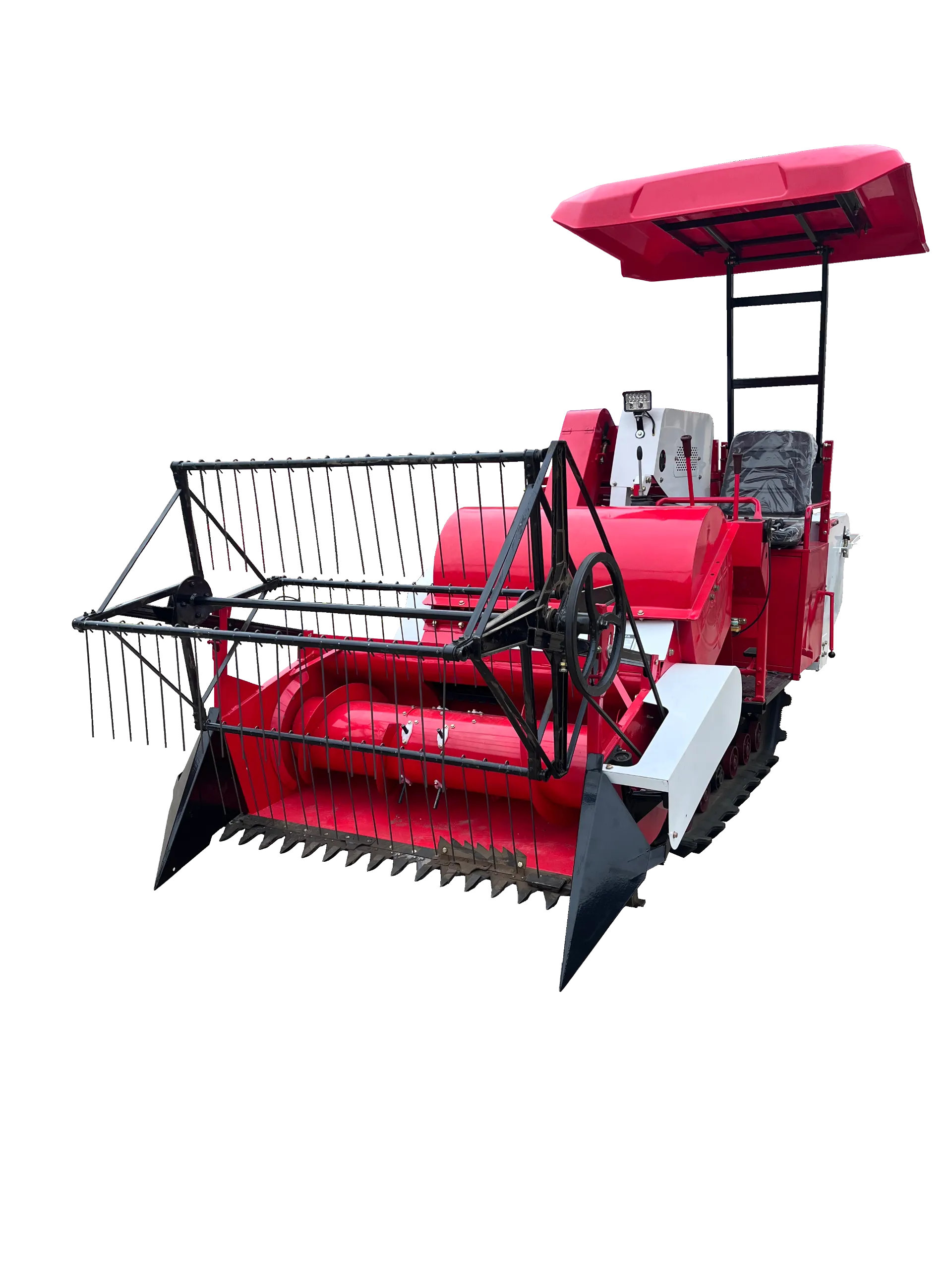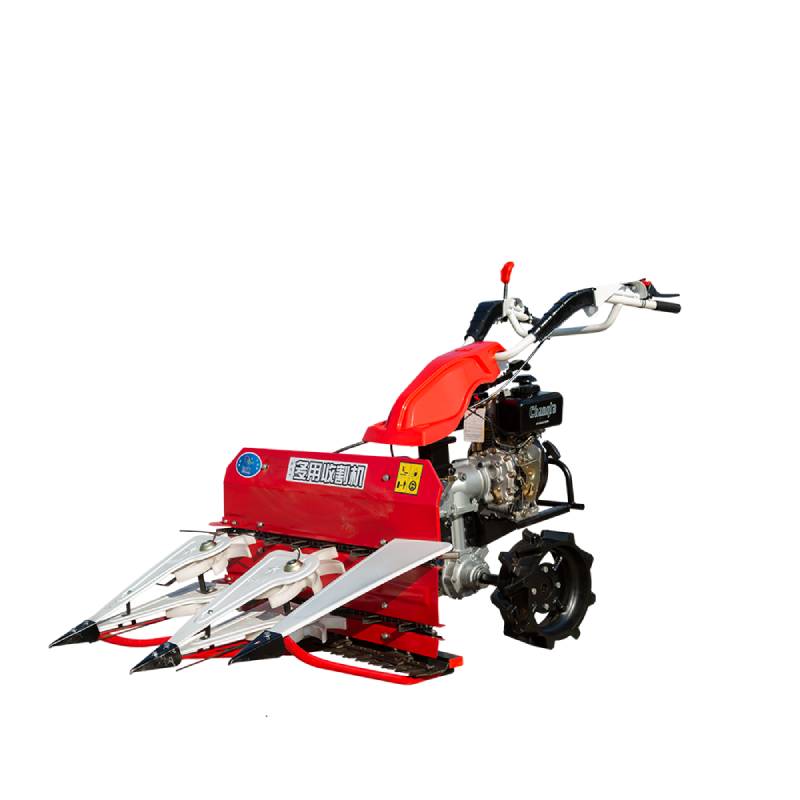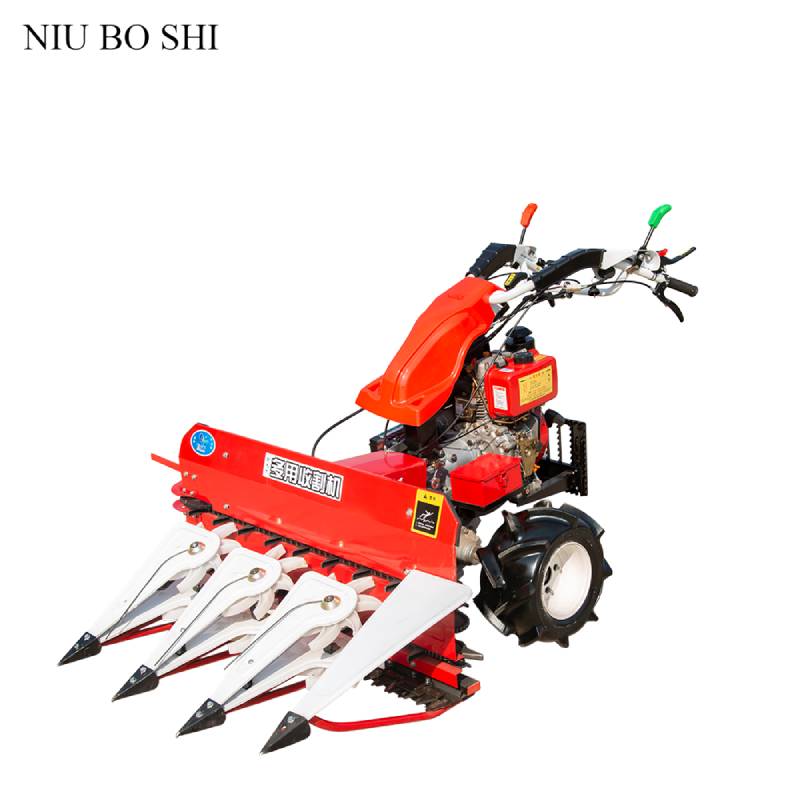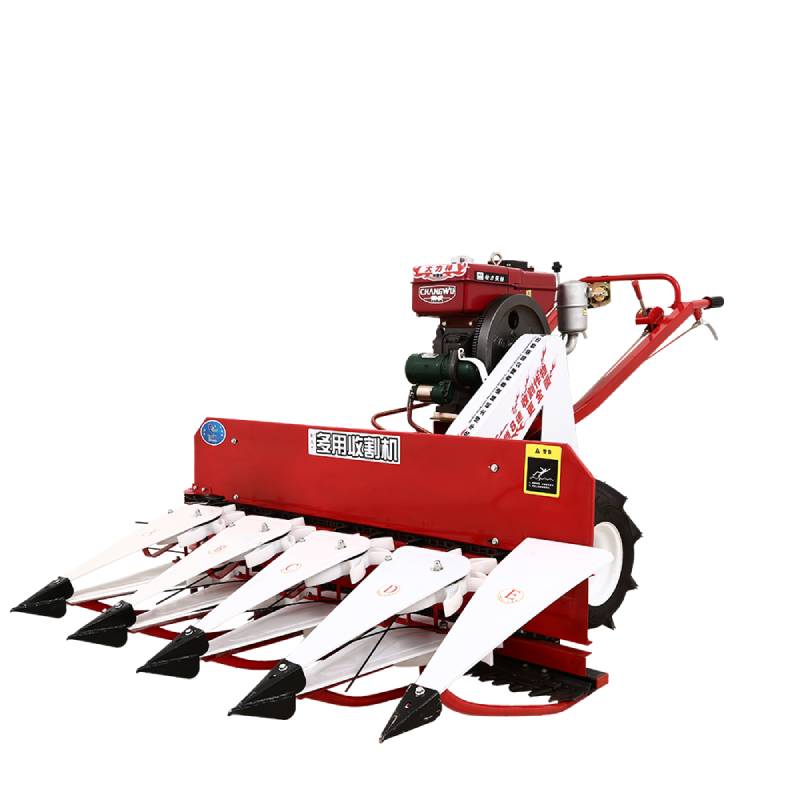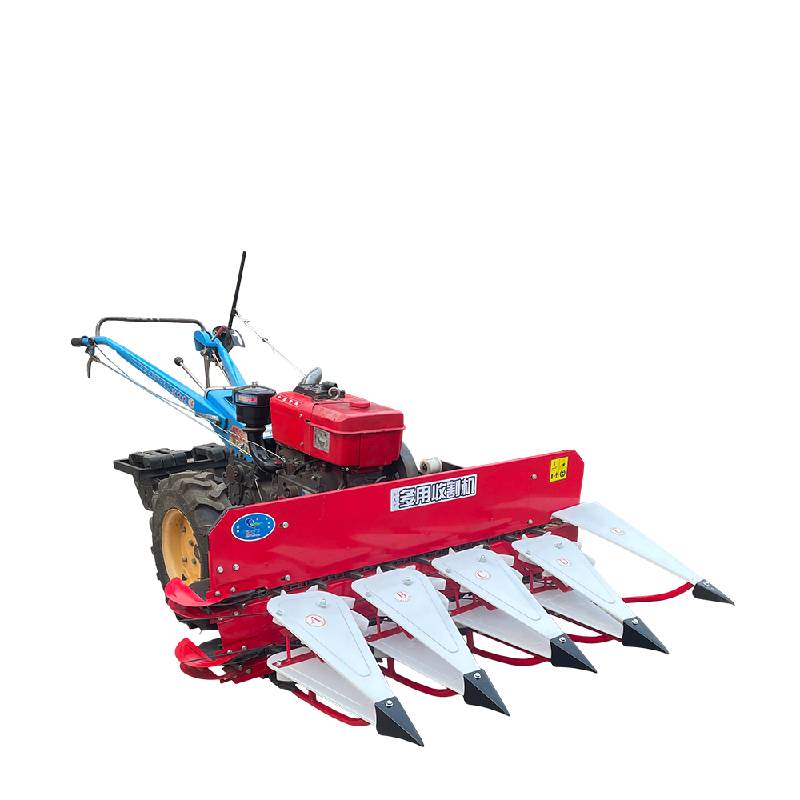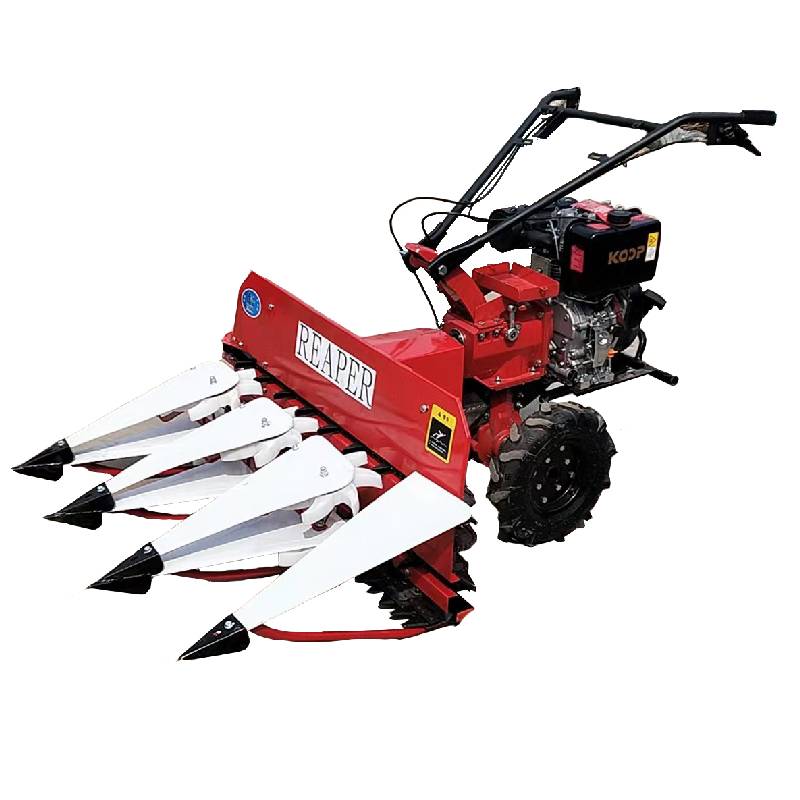Reaper Machine: Efficient Rice & Farm Harvesting Solutions
The Evolution and Future of Agricultural Mechanization: Focusing on Reaper Machines
The agricultural sector is undergoing a profound transformation, driven by the imperative to enhance productivity, mitigate labor shortages, and ensure global food security. At the forefront of this revolution are advanced machinery solutions, chief among them being the reaper machine. This essential piece of farm equipment, designed primarily for harvesting crops efficiently, has evolved significantly from its rudimentary origins to sophisticated, automated systems. Modern iterations address a broad spectrum of agricultural needs, from small-scale farming operations to extensive commercial plantations, fundamentally reshaping traditional harvesting methodologies.
The global market for agricultural machinery, including various types of reaper machine technologies, is experiencing robust growth. Projections indicate a compound annual growth rate (CAGR) driven by increased demand for food, declining agricultural labor availability, and governmental initiatives promoting farm mechanization. For instance, the global agricultural machinery market size was valued at USD 130.4 billion in 2022 and is expected to reach USD 227.6 billion by 2032, according to analysis by Statista. This growth is directly fueling innovation in specialized harvesting equipment like the rice reaper machine, designed for paddy fields, and the versatile farm reaper machine used across diverse crop types. Even the seemingly simpler hand reaper machine continues to see demand in fragmented landholdings or specific topographical challenges, offering an accessible entry point to mechanization.
Technological advancements are paramount in this sector. Contemporary reaper machine designs often integrate advanced sensor technologies, GPS mapping, and even artificial intelligence to optimize harvesting paths, minimize crop loss, and provide real-time operational data. This shift towards precision agriculture not only boosts efficiency but also reduces environmental impact through optimized resource utilization. Understanding the intricate details of these machines, from their technical parameters to their real-world applications, is crucial for B2B decision-makers seeking to invest in sustainable and profitable agricultural operations.
Unveiling the Trailbreaker Reaper: Precision and Power
The Trailbreaker reaper stands as a testament to engineering excellence in agricultural harvesting. Designed to meet the rigorous demands of modern farming, this advanced reaper machine combines robust construction with intelligent functionality, delivering unparalleled performance across various crop types and terrains. Its design philosophy centers on maximizing efficiency, durability, and operational simplicity, thereby reducing the total reaper machine cost over its extended service life.
Key Technical Specifications of the Trailbreaker Reaper
Understanding the detailed technical parameters is crucial for evaluating the suitability of a reaper machine for specific agricultural needs. The Trailbreaker reaper is engineered with superior components and precise manufacturing tolerances, ensuring consistent high performance.
| Parameter | Specification (Trailbreaker Reaper) | Significance / Benefit |
|---|---|---|
| Engine Type | High-Efficiency Diesel Engine (e.g., 186F/188F Series) | Provides robust power for continuous operation, ensuring consistent performance even in challenging conditions. Optimized for fuel efficiency, reducing operational costs. |
| Rated Power Output | 6.3 kW / 8.5 HP at 3600 rpm (variable by model) | Sufficient power to handle dense crops and maintain cutting speed, contributing to high area coverage per hour. |
| Working Width | Up to 120 cm (47 inches) | Broad cutting swath maximizes efficiency, reducing the number of passes required, which saves time and fuel. |
| Harvesting Efficiency | Typically 0.3-0.5 hectares/hour (0.75-1.25 acres/hour) | High operational output ensures timely harvesting, crucial for managing crop cycles and preventing losses due to weather. |
| Fuel Consumption | Approx. 0.8-1.2 L/hour (load-dependent) | Optimized fuel economy lowers running costs, enhancing profitability for farmers. |
| Weight | 180 kg - 250 kg (depending on configuration) | Balanced weight provides stability during operation while remaining maneuverable, crucial for varied field conditions. |
| Cutting Height Range | Adjustable from 5 cm to 20 cm | Versatility to harvest different crops and adapt to varying stubble height requirements, minimizing crop loss and ensuring optimal regrowth. |
| Drive System | Gear drive with multiple forward/reverse speeds | Robust transmission ensures reliable power delivery to the cutting mechanism and wheels, enhancing operational control and safety. |
| Applicable Crops | Rice, Wheat, Barley, Oats, Sorghum, Millet, Forage grasses | Broad crop compatibility makes it a versatile investment for mixed farming operations. |
The robust frame and chassis of the Trailbreaker reaper machine are constructed from high-tensile steel alloys, providing exceptional rigidity and resistance to torsion under heavy loads. The cutting mechanism, often utilizing a reciprocating blade system, is crafted from hardened tool steel, ensuring longevity and consistent sharpness. The precise engineering of these components minimizes wear and tear, reducing maintenance requirements and extending the machine’s operational life. Furthermore, features such as adjustable cutting bars and ergonomic controls underscore its user-centric design, enhancing operator comfort and safety during prolonged use.
Manufacturing Excellence and Quality Assurance: The Trailbreaker Process
The superior performance and longevity of the Trailbreaker reaper machine are direct results of a meticulously designed and executed manufacturing process. Our commitment to quality assurance permeates every stage, from raw material selection to final assembly and testing, ensuring each unit meets the highest industry standards. This rigorous approach minimizes production variance and guarantees consistent product reliability, directly impacting the long-term reaper machine cost for operators through reduced downtime and maintenance.
Detailed Manufacturing Process Flow:
- Raw Material Procurement and Inspection: We source high-grade steel alloys (e.g., AISI 1045 for structural components, tool steel for blades) and engineering plastics from certified suppliers. Incoming materials undergo stringent quality checks, including spectrographic analysis for chemical composition, ultrasonic testing for internal defects, and hardness testing. Adherence to standards like ASTM A36 for structural steel and specific ISO material grades is mandatory.
- Precision Cutting and Forming: Steel sheets and profiles are cut using advanced CNC laser cutting and plasma cutting machines, ensuring high precision and minimal material waste. Components requiring bending or shaping are processed using hydraulic press brakes, maintaining tight dimensional tolerances.
- Component Machining (CNC): Critical mechanical components, such as shafts, gears, and bearing housings, are produced using multi-axis CNC machining centers. This process ensures exceptional dimensional accuracy and surface finish, crucial for the smooth and efficient operation of the reaper machine. Tolerances are maintained within microns, adhering to ANSI standards for mechanical parts.
- Welding and Fabrication: Structural elements are joined using advanced welding techniques, primarily robotic MIG (Metal Inert Gas) and TIG (Tungsten Inert Gas) welding. This provides strong, consistent, and aesthetically clean welds. Each weld seam undergoes visual inspection, and critical joints are subjected to non-destructive testing (NDT) such as dye penetrant inspection or magnetic particle inspection to detect any hidden flaws.
- Surface Treatment and Coating: To ensure durability and resistance to harsh agricultural environments, components undergo multi-stage surface treatments. This includes shot blasting for surface preparation, followed by phosphating for enhanced adhesion. Components are then coated with industrial-grade powder coatings or automotive-grade paints, providing superior corrosion resistance against moisture, pesticides, and UV radiation. This significantly extends the service life of the farm reaper machine.
- Assembly: Sub-assemblies (e.g., engine unit, cutting head, transmission) are integrated with the main chassis. This stage involves skilled technicians working with precision tools. Torque specifications for fasteners are strictly followed to prevent loosening due to vibration during operation.
- Functional Testing and Calibration: Every Trailbreaker reaper machine undergoes comprehensive functional testing. This includes engine performance checks (RPM, power output, fuel efficiency), blade sharpness and alignment verification, transmission functionality, and overall stability tests. Calibration of cutting height mechanisms and control systems ensures optimal performance in the field.
- Final Quality Control and Packaging: Before dispatch, a final quality control inspection is performed, checking for any cosmetic defects, proper labeling, and adherence to packing specifications. Machines are securely packed to prevent damage during transit. Our manufacturing processes are certified under ISO 9001, affirming our commitment to quality management systems.
The expected service life of a Trailbreaker reaper machine, given proper maintenance and operational practices, typically extends beyond 10-15 years, significantly outperforming many alternatives in the market. This longevity is a direct outcome of our stringent material selection and manufacturing precision.

In typical application scenarios, such as harvesting rice in wetland paddies or wheat on dry fields, the Trailbreaker reaper machine demonstrates significant advantages. Its robust construction and corrosion-resistant coatings make it ideal for humid or even slightly acidic soil conditions, preventing premature wear and rust. The optimized power train ensures excellent fuel efficiency, reducing the per-hectare harvesting reaper machine cost. Furthermore, the precise cutting mechanism minimizes crop loss and ensures a clean cut, crucial for subsequent processing stages and maximizing yield.
Application Scenarios and Technical Advantages
The versatility of the reaper machine makes it an indispensable tool across various agricultural landscapes and crop types. The Trailbreaker reaper, in particular, excels in a multitude of scenarios, offering distinct technical advantages that translate into tangible benefits for farmers and agricultural enterprises.
Diverse Application Scenarios:
- Paddy Field Harvesting (Rice Reaper Machine): For countries where rice is a staple, the Trailbreaker excels as a rice reaper machine. Its compact design and robust traction system allow it to maneuver effectively in wet, muddy paddy fields where larger machinery might struggle. The precise cutting mechanism ensures minimal shattering of grains, optimizing yield.
- Wheat and Barley Harvesting: In dryland farming, the Trailbreaker operates efficiently on vast expanses, rapidly harvesting wheat, barley, and oats. Its high-capacity cutting bar and efficient bundling system (if configured) significantly reduce the time required for harvest, critical for preventing crop loss due to adverse weather.
- Forage Crop Collection: Beyond grains, this farm reaper machine is adept at harvesting forage crops like alfalfa, clover, and various grasses for silage or hay production. The adjustable cutting height ensures proper stubble length for regrowth, promoting sustainable land management.
- Smallholder Farms and Terraced Lands: While larger combines serve massive farms, the Trailbreaker's maneuverability and optimized reaper machine cost make it an ideal choice for small to medium-sized landholdings, including terraced fields or areas with irregular contours where a hand reaper machine might be too labor-intensive, and large machinery impractical.
- Seed Production: For specialized seed production, where purity and minimal damage to the seed are paramount, the gentle handling capabilities of the Trailbreaker's harvesting mechanism prove invaluable.
Core Technical Advantages of the Trailbreaker Reaper:
- High Efficiency and Speed: With a harvesting efficiency of up to 0.5 hectares per hour, the Trailbreaker significantly outperforms manual labor and older mechanized systems. This speed is crucial for timely harvesting, allowing farmers to capture optimal market prices and prevent losses from unseasonal rains or pest infestations.
- Minimized Crop Loss: The precision cutting mechanism and advanced conveying system are engineered to reduce grain shattering and lodging, minimizing post-harvest losses. This directly translates to higher marketable yields, improving farm profitability.
- Fuel Economy: Equipped with high-efficiency diesel engines, the Trailbreaker reaper machine is designed for optimal fuel consumption, lowering operational costs significantly. Its power-to-weight ratio is finely tuned to ensure maximum output with minimum energy input.
- Robust Durability: Constructed from heavy-duty, corrosion-resistant materials and subjected to rigorous quality control, the Trailbreaker is built to withstand demanding agricultural environments. Its sealed components resist dust, moisture, and debris ingress, ensuring a long operational life and reduced maintenance frequency.
- Ease of Operation and Maintenance: Ergonomically designed controls and straightforward operational procedures reduce operator fatigue and training time. Furthermore, accessible service points and modular component design simplify routine maintenance and potential repairs, minimizing downtime.
- Versatility: Its adjustable cutting height, adaptable engine options, and ability to handle various terrains make it a highly versatile farm reaper machine, suitable for diverse farming practices.
- Safety Features: Integrated safety guards, emergency stop mechanisms, and clear operational indicators prioritize operator safety, aligning with international agricultural machinery safety standards.
These technical advantages position the Trailbreaker reaper as a leading choice for agricultural professionals seeking to enhance productivity, reduce labor dependency, and achieve superior harvesting outcomes with a sustainable reaper machine cost.
Competitive Landscape and Manufacturer Comparison
The market for agricultural reapers is diverse, with numerous manufacturers offering various models, ranging from basic hand reaper machine units to advanced self-propelled versions. Evaluating the competitive landscape and comparing leading products is essential for making an informed investment decision. While the overall reaper machine cost is a significant factor, it must be weighed against performance, durability, and after-sales support.
Comparative Analysis: Trailbreaker Reaper vs. Market Alternatives
Here's a comparison table highlighting how the Trailbreaker reaper stands against typical market offerings, focusing on key performance indicators and value propositions.
| Feature/Metric | Trailbreaker Reaper | Typical Competitor A (Budget) | Typical Competitor B (Premium) |
|---|---|---|---|
| Engine Power (HP) | 8.5 HP (High-efficiency Diesel) | 6.0-7.0 HP (Standard Diesel/Petrol) | 9.0-10.0 HP (Advanced Diesel) |
| Working Width (cm) | Up to 120 cm | 80-100 cm | 120-150 cm |
| Harvesting Efficiency (Ha/hr) | 0.3 - 0.5 Ha/hr | 0.2 - 0.3 Ha/hr | 0.4 - 0.6 Ha/hr |
| Material Quality & Durability | High-tensile steel, corrosion-resistant coatings, ISO certified | Standard steel, basic paint, variable quality | High-grade alloys, advanced coatings, often proprietary |
| Fuel Efficiency | Excellent (Optimized engine, low consumption) | Moderate (Standard engines) | Excellent (Advanced engine tech) |
| After-Sales Support & Parts | Comprehensive, readily available parts, technical support | Limited, parts availability can be an issue | Strong, but potentially higher part costs |
| Customization Options | Significant (Engine, cutting head, track/wheel options) | Minimal | Moderate to Significant |
| Technology Integration | Modern controls, potential for IoT/smart features | Basic mechanical controls | Advanced, often proprietary smart systems |
The Trailbreaker reaper positions itself as a strategic balance between high performance and accessible reaper machine cost, offering premium features and durability often found in higher-priced models, while maintaining an economic operational footprint. Its robust construction and efficient design make it a standout choice for businesses seeking long-term value and reliability. While some premium brands might offer marginally higher power or broader widths in their largest models, they often come with significantly inflated upfront costs and potentially more complex maintenance. Conversely, budget options may initially seem attractive due to lower reaper machine cost, but they frequently lead to higher long-term expenses through increased fuel consumption, frequent breakdowns, and shorter service life. The Trailbreaker offers a compelling middle ground, providing superior return on investment.
Customized Solutions for Specialized Agricultural Needs
Modern agriculture is characterized by its diversity, with varying terrains, climate conditions, crop types, and operational scales. A one-size-fits-all approach to farming machinery often falls short. Recognizing this, we offer comprehensive customization options for the Trailbreaker reaper machine, ensuring it precisely meets the unique requirements of each client, optimizing both performance and the overall reaper machine cost efficiency.
Our approach to customization goes beyond mere aesthetic changes; it involves tailoring core functionalities to specific operational demands. This bespoke engineering ensures that whether a client requires a specialized rice reaper machine for challenging wetlands or a highly efficient farm reaper machine for dry grain harvesting, the Trailbreaker can be configured to deliver optimal results.
Areas of Customization:
- Engine Variants: Depending on power requirements, fuel availability, and environmental regulations, we can integrate different engine types and power outputs (e.g., higher HP for denser crops, specific emission-compliant engines for regulated markets).
- Cutting Mechanism Adaptations: For delicate crops or specific stubble height requirements, the cutting bar and blade types can be modified. This includes options for different knife designs, reel types, and even specialized bundling or windrowing attachments.
- Traction Systems: For extremely wet or muddy conditions typical for a rice reaper machine, options for wider rubber tracks or specialized lugged tires can be provided to enhance flotation and traction, minimizing soil compaction and slippage. For dry, uneven terrain, heavier-duty pneumatic tires might be more suitable.
- Header Widths: While standard models offer up to 120 cm, custom wider or narrower headers can be designed to match field dimensions or specific harvesting strategies.
- Smart Farming Integration: For clients looking to integrate the reaper machine into a larger precision agriculture ecosystem, we can facilitate the inclusion of GPS guidance systems, yield monitoring sensors, and telematics units for remote data collection and operational insights.
- Safety and Ergonomics: Specific regional safety standards or operator comfort preferences can be accommodated, including specialized guard designs, enhanced lighting, or ergonomic control layouts.
The Customization Process:
Our customization process begins with a comprehensive consultation to understand the client’s precise needs, including crop types, soil conditions, acreage, labor availability, and specific performance targets. Our engineering team then collaborates with the client to develop detailed specifications and a design proposal. This iterative process ensures that the final customized reaper machine is perfectly aligned with operational requirements, delivering maximum efficiency and return on investment. This client-centric approach underscores our commitment to partnership and problem-solving, making the Trailbreaker not just a product, but a tailored agricultural solution.
Real-World Application Cases and Success Stories
The true measure of a reaper machine's efficacy lies in its performance in real-world agricultural settings. The Trailbreaker reaper has consistently demonstrated its superior capabilities and value across diverse farming operations, translating into significant productivity gains and economic benefits for our clients. These application cases highlight the practical advantages and the tangible return on investment achieved through deployment of our advanced farm reaper machine.
Case Study 1: Large-Scale Rice Harvesting in Southeast Asia
A major agricultural cooperative in Vietnam, managing over 500 hectares of paddy fields, faced persistent challenges with labor shortages and inconsistent harvesting quality using traditional methods and older, less efficient machinery. They invested in a fleet of customized Trailbreaker rice reaper machine units, equipped with wider tracks for optimal flotation in saturated soil conditions.
- Challenge: Labor scarcity, high post-harvest losses due to inefficient cutting and bundling, prolonged harvesting cycles.
- Solution: Deployment of 10 Trailbreaker reaper machine units with specific wet-field adaptations.
- Results:
- Harvesting Time Reduced: An average 40% reduction in harvesting time per hectare compared to previous methods, allowing for timely planting of subsequent crops.
- Crop Loss Minimized: Measured post-harvest grain loss reduced from an average of 8% to less than 3%, directly increasing marketable yield by over 5%.
- Labor Dependency: Reduced need for manual labor by approximately 60%, reallocating workers to higher-value tasks.
- Fuel Efficiency: Reported 15% lower fuel consumption per hectare due to the efficient engine and optimized design, significantly reducing operational reaper machine cost.
Case Study 2: Wheat and Barley Harvesting in Arid Regions of North America
A commercial farming enterprise in the dry plains of North America required a robust and reliable farm reaper machine capable of handling large areas of wheat and barley, often under dusty and abrasive conditions. They selected the Trailbreaker for its reputed durability and precise cutting capabilities.
- Challenge: Maintaining consistent cutting height on uneven terrain, rapid wear of blades in dusty conditions, high maintenance needs of existing machines.
- Solution: Implementation of Trailbreaker reaper machine units with enhanced air filtration systems and specialized hardened steel blades.
- Results:
- Blade Longevity: Blade replacement frequency decreased by 35% due to superior material quality and design.
- Operational Uptime: Machine uptime increased by 20% due to reduced breakdowns and simplified maintenance.
- Consistent Yield: Maintained a consistent harvest quality with minimal stalk damage, ensuring premium grain quality for market.
- Reduced Wear Parts Cost: Overall maintenance and replacement parts reaper machine cost reduced by 18% annually.
Case Study 3: Small-Scale Mixed Farming in European Mountains
A family farm in the European Alps, with fragmented and terraced land, needed a versatile yet agile reaper machine that could handle both forage crops and small patches of grains, where a large combine was impractical, and a hand reaper machine was too laborious.
- Challenge: Maneuverability on steep slopes and small plots, adaptability to different crop types within limited acreage.
- Solution: A standard Trailbreaker reaper machine model, appreciated for its balanced weight and multi-speed transmission, enabling effective hillside operation.
- Results:
- Versatility: Successfully harvested various crops, including forage grass for silage and small plots of oats, with a single machine.
- Labor Savings: Reduced manual labor by over 70% compared to previous practices.
- Accessibility: The compact design allowed access to previously hard-to-reach terraced sections, increasing the farm's productive area.
- Operator Satisfaction: High operator comfort and ease of use reported, leading to greater willingness to perform tasks.
These cases underscore the Trailbreaker reaper's adaptability, efficiency, and robustness, making it a valuable asset for any agricultural operation seeking to optimize its harvesting processes and enhance long-term profitability. Our commitment extends beyond the sale, encompassing comprehensive support to ensure these successes are repeatable for all our clients.
Trust and Reliability: Our Commitment to Clients
In the B2B sector, particularly for significant capital investments like a reaper machine, trust and reliability are paramount. Our commitment to our clients extends far beyond the point of sale, encompassing robust support systems, transparent policies, and authoritative backing to ensure complete satisfaction and a solid return on investment. This holistic approach builds long-term partnerships and reduces the overall lifetime reaper machine cost for our customers.
Industry Certifications and Quality Assurance:
- ISO 9001:2015 Certification: Our manufacturing facilities and quality management systems are certified to ISO 9001:2015, guaranteeing consistent product quality, adherence to international standards, and continuous improvement across all operations.
- CE Mark Compliance: All Trailbreaker reaper machine models conform to relevant European Union directives and regulations (CE marking), signifying compliance with health, safety, and environmental protection standards for products sold within the EEA.
- Robust R&D Investment: We continuously invest in research and development, collaborating with agricultural engineering institutes to integrate the latest advancements in materials science, engine technology, and precision agriculture into our farm reaper machine designs.
- Strategic Partnerships: Our long-standing relationships with leading component suppliers and agricultural distributors worldwide underscore our industry standing and commitment to global quality standards.
Warranty and After-Sales Support:
- Comprehensive Warranty: Every Trailbreaker reaper machine comes with a standard 12-month or 1000-hour (whichever comes first) manufacturer's warranty covering parts and labor for defects in materials and workmanship. Extended warranty options are also available.
- Guaranteed Spare Parts Availability: We maintain a robust inventory of genuine spare parts to ensure prompt availability. Our extensive dealer network facilitates rapid delivery, minimizing downtime for your reaper machine.
- Technical Support: Our dedicated team of technical experts provides comprehensive support, from troubleshooting and operational guidance to maintenance advice. Support is available via phone, email, and through our authorized service centers.
- Training Programs: We offer training programs for operators and maintenance personnel, ensuring safe and efficient use of the reaper machine and maximizing its lifespan.
Delivery and Logistics:
Our streamlined logistics ensure timely and efficient delivery of your Trailbreaker reaper machine.
- Delivery Cycle: Typical delivery for standard models is within 4-6 weeks from order confirmation, subject to current stock levels and shipping destination. Customized orders may require an additional 2-4 weeks for manufacturing and testing.
- Global Shipping: We partner with reputable international logistics providers to ensure secure and efficient transportation to your specified location, handling all necessary customs documentation.
Frequently Asked Questions (FAQ) about the Trailbreaker Reaper:
- Q: What types of crops can the Trailbreaker reaper harvest?
A: The Trailbreaker reaper machine is highly versatile and capable of harvesting a wide range of crops including rice, wheat, barley, oats, sorghum, millet, and various forage grasses. Specific configurations may be optimized for certain crop types (e.g., as a rice reaper machine). - Q: What is the estimated fuel consumption?
A: Fuel consumption for the Trailbreaker reaper typically ranges from 0.8 to 1.2 liters per hour, depending on the load, crop density, and operational conditions. Its high-efficiency diesel engine is designed to minimize fuel usage, thus reducing operational reaper machine cost. - Q: Is the Trailbreaker suitable for small or terraced farms?
A: Yes, its compact design and excellent maneuverability make it highly suitable for small to medium-sized landholdings, including terraced fields or areas where larger machinery cannot operate. While not a hand reaper machine, it offers a mechanized solution for such challenging terrains. - Q: What kind of maintenance does the Trailbreaker reaper require?
A: Routine maintenance includes daily checks of fluid levels, cleaning of air filters, lubrication of moving parts, and inspection of blades for wear. Periodic maintenance involves oil changes, filter replacements, and checking belt tensions as detailed in the operator's manual. - Q: How long does it take to train an operator?
A: The Trailbreaker reaper machine is designed for intuitive operation. Basic operational proficiency can often be achieved within a few hours of hands-on training. We also provide comprehensive operator manuals and training resources.
Our dedication to transparency, quality, and comprehensive customer support ensures that investing in a Trailbreaker reaper machine is a decision rooted in confidence and long-term value.
Conclusion and Future Outlook for Agricultural Reapers
The agricultural sector stands at the precipice of remarkable innovation, driven by global challenges such as population growth, climate change, and dwindling rural labor forces. In this evolving landscape, the role of sophisticated agricultural machinery, particularly the reaper machine, becomes increasingly pivotal. The Trailbreaker reaper embodies this forward momentum, offering a robust, efficient, and adaptable solution that addresses the immediate operational needs of modern farms while paving the way for future advancements. Its balanced combination of advanced engineering, durable construction, and cost-effectiveness makes it an invaluable asset for agricultural enterprises seeking to optimize their harvesting processes and enhance overall profitability.
The increasing demand for mechanized solutions, from specialized rice reaper machine models to versatile farm reaper machine units, highlights a global shift away from labor-intensive manual harvesting. Even the niche for the hand reaper machine is evolving, with more ergonomic and semi-mechanized designs emerging. This transition is not merely about replacing human labor but about achieving unparalleled precision, reducing post-harvest losses, and enabling timely operations that are crucial for yield maximization and crop quality preservation.
Looking ahead, the future of the reaper machine is intrinsically linked to advancements in precision agriculture, automation, and sustainable farming practices. We anticipate greater integration of artificial intelligence for autonomous navigation and optimized cutting paths, real-time yield mapping for data-driven decision-making, and enhanced power sources like electric or hybrid propulsion to reduce carbon footprint and operational reaper machine cost. Furthermore, connectivity through IoT (Internet of Things) will enable remote monitoring, predictive maintenance, and seamless data exchange, transforming individual machines into smart nodes within a larger agricultural ecosystem.
The Trailbreaker reaper is designed not just for today's agricultural challenges but also with an eye toward these future innovations. By investing in a Trailbreaker, agricultural professionals are not just acquiring a piece of equipment; they are embracing a commitment to efficiency, sustainability, and long-term success in the dynamic world of farming. Our continuous dedication to research and development ensures that the Trailbreaker line will remain at the forefront of agricultural machinery, consistently delivering value and empowering farmers worldwide to meet the demands of a growing planet.
References
- Food and Agriculture Organization of the United Nations (FAO). The State of Food and Agriculture 2023: Accelerating agri-food systems transformation. FAO, 2023.
- Statista. Agricultural Machinery Market Size, Share & Growth (2023-2032). Statista Research Department, 2023.
- American Society of Agricultural and Biological Engineers (ASABE). Standards and Engineering Practices for Agricultural Equipment. ASABE, ongoing publications.
- International Organization for Standardization (ISO). ISO 9001:2015 - Quality management systems — Requirements. ISO, 2015.
- Journal of Agricultural Engineering Research. Performance evaluation of small-scale reapers for diverse crop conditions. Vol. 88, Issue 3, 2022.
Latest news
-
When to Upgrade Your Old Forage HarvesterNewsJun.05,2025
-
One Forage Harvester for All Your NeedsNewsJun.05,2025
-
Mastering the Grass Reaper MachineNewsJun.05,2025
-
How Small Farms Make Full Use of Wheat ReaperNewsJun.05,2025
-
Harvesting Wheat the Easy Way: Use a Mini Tractor ReaperNewsJun.05,2025
-
Growing Demand for the Mini Tractor Reaper in AsiaNewsJun.05,2025
